
Yarrow (Achillea millefolium): Healing Uses, Identification & How to Use
Yarrow (Achillea millefolium) is a member of the daisy or Asteraceae family. This perennial plant has numerous common names including, Milfoil, Nosebleed, Woundwort, Thousand-leaf, and – the one most often used today – Common Yarrow.
This plant is enjoyed by gardeners but is also found growing wild in meadows, in wasteland areas, and at the roadside.
While Common Yarrow blooms are white, there is now a multitude of varieties of this species that come in a range of colors. However, this article focuses specifically on Common Yarrow.
The History Of Yarrow
 This herbal plant has a rich and colorful history in folklore and medicine. In Ancient Greece Yarrow was linked to the legendary warrior Achilles and his army who supposedly used it to staunch the bleeding from wounds.
This herbal plant has a rich and colorful history in folklore and medicine. In Ancient Greece Yarrow was linked to the legendary warrior Achilles and his army who supposedly used it to staunch the bleeding from wounds.
The Ancient Romans also used this plant in the same way for their soldiers and called it herbal militaris.
Yarrow is called Biranjasipha in Sanskrit and it is used in Ayurvedic medicine in India. In fact, it has been used as part of remedies for gastrointestinal problems for centuries.
The Druids in Ancient Britain believed that the herb also had mystic power as it was thought to help find one’s true love and to give second sight.
In North America, the Miwok, Pawnee, Cherokee, and Navajo peoples are among many that used this freely available herb for a range of health problems from pain and bleeding to colds and insomnia. There are reports of the herb being used to treat wounds suffered by soldiers in the Civil War.
Where This Plant Is Found
The broader Yarrow genus is native to temperate regions of Asia, Europe, and North America. It is therefore considered to be native to Eurasia as the spread extends from China to the UK.
It has also been introduced to Australia and New Zealand, initially as a form of livestock feed. It is now naturalized and is found growing wild.
Related: The Complete Map of Edible Plants: Find Out What You Have in Your Area! (Video)
How To Identify Yarrow
Yarrow is not difficult to identify. One aspect that helps with identification is the scent: it is strong and sweet and described by many as like that of chrysanthemums. The bitter taste is equally powerful. These erect plants at maturity can reach a height of 1 meter / 3 ¼ feet.
 Leaf: The leaves are feathery, alternate, arranged spirally, 3 – 20 cm / 1 ¼ – 7 ¾ inches long, and evenly distributed on the stems. The leaves at the base and middle of stems are larger than the ones higher up. The leaves are hairy.
Leaf: The leaves are feathery, alternate, arranged spirally, 3 – 20 cm / 1 ¼ – 7 ¾ inches long, and evenly distributed on the stems. The leaves at the base and middle of stems are larger than the ones higher up. The leaves are hairy.- Stems: The stems are rigid, angular, and fibrous in texture.
 Flower: Yarrow blooms from the start of summer through to early fall. The individual blooms form composite flower heads. Each head consists of 15 to 40 small, round, white or pale pink flowers that have yellow centers.
Flower: Yarrow blooms from the start of summer through to early fall. The individual blooms form composite flower heads. Each head consists of 15 to 40 small, round, white or pale pink flowers that have yellow centers.- Fruit: The fruits are small and contain seeds.
It is the combination of the feathery leaves and flower heads that make Yarrow easy to spot.
How To Grow Yarrow
This medicinal plant is easy to grow. All it really wants is the sun. It is not fussy about soil type and does not need a lot of water (although plants in containers need more watering than those in the ground).
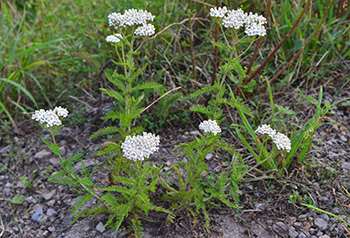
You can opt to buy small plants from a nursery or garden center or grow Yarrow yourself from seeds you purchased or harvested from your own or wild plants.
Seeds are planted in spring and shouldn’t be planted deeper than ¼ inch / ½ centimeter. They should be 12 – 18 inches / 30 – 46 centimeters apart to allow the maturing plants the necessary space. The seeds require sunlight and should be kept moist until they germinate. The temperature for germination should be 18 – 240 Celsius / 64 – 750 Fahrenheit.
Get Your Own Yarrow Seeds, Last 30 Packs Left
How To Harvest This Plant
If you are interested in making your own essential oil, then you should be targeting the flowers, since they have more oil. You can simply snip off the flower tops with a pair of scissors. I find that this type of fiddly, delicate work is best done without gloves.
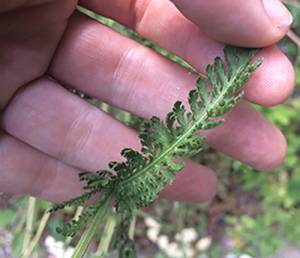
To dry the flowers, spread them out on some paper and place them in a well-ventilated room out of the sun.
But if your recipe calls for more tannins, then the leaves and stem are best. Tannins are compounds that give yarrow its ability to staunch the blood and decrease blood pressure. Tannins also help your body’s immune system respond to bacteria and germs. Usually, a sharp pair of scissors is enough to cut through the stem since you preferably want to harvest the freshest part of the plant. A good rule of thumb is to cut approximately halfway along the stem.
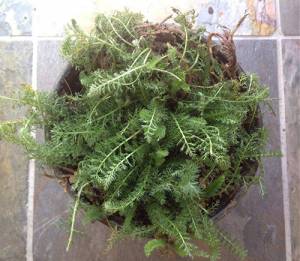
If you are harvesting from your own garden, then throw on a pair of gloves, and use pruning shears to cut the stems a few inches above the ground so that it looks tidier.
To dry the stems and leaves, just bundle a few stems together with some string and hang them in a well-ventilated room out of the sun.
Remember to leave the roots when foraging in the wild so that the plant can regenerate easier.
What Yarrow Is Good For And The Natural Remedies Made From It
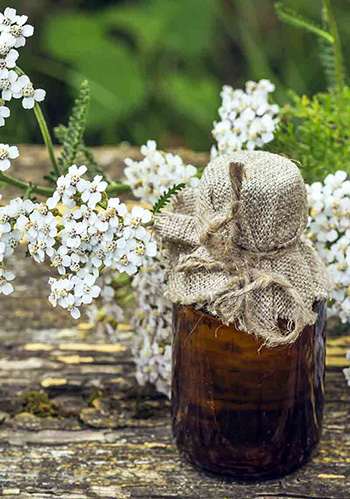 Some of the most important active ingredients in Yarrow are asparagine, achilleine, archilletin, bitters, calcium salts, potassium, flavonoids, isovaleric acid, salicylic acid, and sterols. It is these that are believed to give this plant its medicinal properties.
Some of the most important active ingredients in Yarrow are asparagine, achilleine, archilletin, bitters, calcium salts, potassium, flavonoids, isovaleric acid, salicylic acid, and sterols. It is these that are believed to give this plant its medicinal properties.
Yarrow is considered to have astringent, antiseptic, anti-bacterial, anti-inflammatory, anti-spasmodic, coagulant and – interestingly – blood thinning, diaphoretic (causes sweating), and hypotensive abilities. It is also viewed in traditional medicine as a useful general tonic.
As a result, various Yarrow preparations are used to deal with or ease:
| Condition | Symptoms | Yarrow remedy |
|---|---|---|
| Gastric discomfort | Bloating, gas, diarrhea, cramps | Tea or tincture |
| Wounds | Bleeding, mild infection | Crushed fresh leaves, salve |
| Menstrual problems | Clotting, weak flow, pain | Infusion |
| Hemorrhoids | Inflammation, swelling, bleeding | Ointment |
| Skin problems | Acne, dry skin | Oil |
| Urinary tract infections | Pain, inflammation | Tea |
| Colds and flu | Fever, inflammation, pain | Hot tea |
| Inflammatory joint conditions | Pain, swelling, inflammation | Tea, tincture, salve |
Which preparation you use will, as can be seen, be guided by what condition or symptom you wish to treat or ease. It should also be noted that, while there are centuries of anecdotal evidence, there is a lack of clinical evidence of the effectiveness of Yarrow for some of these health concerns.
What Parts of The Plant Are Used In Remedies?
Most of the Yarrow plant can be used. Specifically, the roots, leaves, and flowers are all utilized.
However, the stems or stalks are not useful for remedies and neither are the seeds. In addition, the root is also not used medicinally.
Yarrow Seeds: Last Minute Deal
A DIY Yarrow Tea Recipe
Yarrow tea is a frequently used way of using this herbal plant partly because it has several applications but also because it is easy to make. So, let us look at how to make an easy recipe for making Yarrow Tincture. While the preparation and processing are quick, you need some patience to allow the mixture to become ready. Yarrow Tincture is available now in my Apothecary!
Ingredients
- 3 ½ tablespoons of dried Yarrow
- 10 tablespoons of >80% proof alcohol such as vodka
If you want to make a larger quantity, you can do so. Also, some people suggest that >90% proof alcohol is preferable.
Method
- Place the Yarrow in a suitable glass jar
- Pour the alcohol over the herb

- Gently stir the Yarrow so that it is mixed with the alcohol
- Place an airtight lid on the jar and label it clearly
- Store the jar in a cool, dark place for 6 – 8 weeks
- Strain the mixture through a sieve or kitchen muslin

- Place the tincture into labeled glass dropper bottles.

The alcohol acts as an excellent preservative; you can keep and use the tincture for 12 – 18 months. However, if you notice a change in the tincture’s aroma, color, or taste then it is better to get rid of it.
How To Make Your Own Yarrow Powder
Dosage
As with any herbal preparation, how much you use depends on both general and personal factors including:
- An individual’s age
- A person’s general health: existing medical conditions and current medications
- What condition requires treatment
- Which remedy will be used to treat or ease the condition.
There are a few guidelines, though. For example, you can enjoy 1 – 3 cups of Yarrow Tea daily. A tincture of the strength described in the recipe can be taken in water 1 – 3 times a day in doses of 20 – 40 drops.
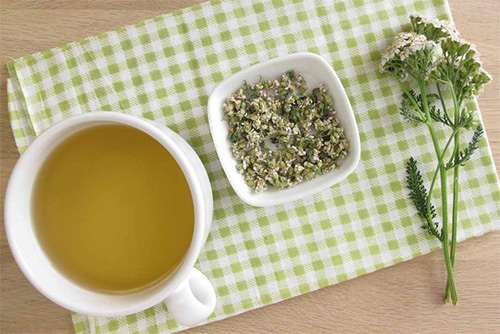
The bottom line is that any remedy, including plant-based ones, must be taken as directed by a healthcare practitioner or by the manufacturer.
How To Preserve This Plant
Yarrow flowers and leaves are best preserved by drying as this retains their medicinal properties and extends their shelf-life. The drying process is straightforward:
- Spread out the flower heads in a thin/single layer on a drying screen, wire mesh, or suitable cloth
- Place the screen/cloth/rack in a well ventilated and shaded place
- Turn or move the flower heads around regularly so that they are all exposed to air
- When the flowers and leaves are dry (crisp to the touch) place them in airtight and labeled containers
- Store the containers in a dark, dry place.

Do not wash the flowers as this will greatly increase the chances of the flowers molding or getting mildewed before they dry. If this happens you must throw them away.
Correctly dried and stored, the plant material should stay fresh and potent for up to a year.
About Nicole’s Spagyric Herbal Tinctures and Salves
Yarrow saved my knuckle. On day 42 of the Alone show, I accidentally cut my hand while gutting a fish. The wound was deep and would have most likely become infected. Luckily I found some yarrow growing nearby and packed some inside my cut. The bleeding stopped in minutes and my wound healed so well that there’s barely a scar left. Yarrow can be found as an important ingredient in my All-Purpose First Aid Salve, and you can grow it easily at home!
All-Purpose (First Aid) Salve is crafted for use on cuts, scrapes, minor wounds, chapped lips and noses, rashes, bites, stings, first-degree burns, eczema, and bruising. This natural salve has ingredients known for pain relief, reducing swelling and bruising, stopping minor bleeding, and soothing diaper rash. It is also crafted to help with painful cracked hands, feet, and lips. We use it on our mosquito bites too. Try coating the inside of your nose with it when you travel to stave off viruses and bacteria. The salve has antibacterial, anti-fungal, and anti-inflammatory properties. This All-Purpose Salve is my #1 selling salve for good reason! It can be found here, in my Travel Pack, in my Winter Defense Bundle, and in my Warrior Bundle.
What Plants Resemble Yarrow?
There are a few plants that are said to resemble Yarrow. However, there are some features – including aroma – that can help to avoid errors in identification. Many people, though, do not find it hard to identify Common Yarrow thanks to the key differences when compared to potential lookalikes:
| Feature | Common YarrowAchillea millefolium | Poison HemlockConium maculatum | Queen Anne’s Lace Daucus carota | Sweet Fennel Foeniculum vulgare |
|---|---|---|---|---|
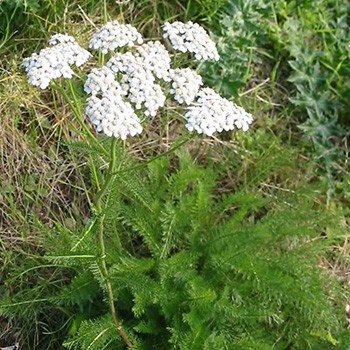 |
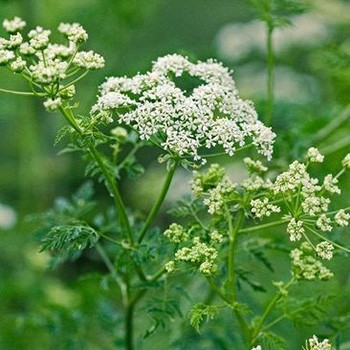 |
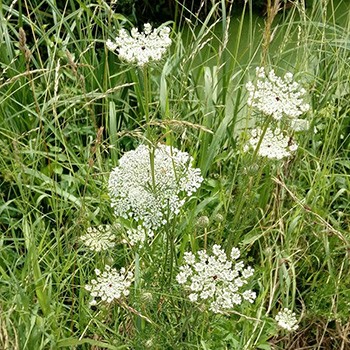 |
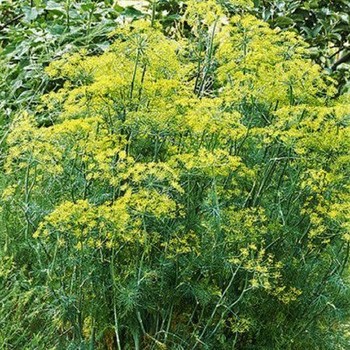 | |
| Edible | Yes | NO! Highly toxic | Yes | Yes |
| Size | 1 – 3 feet / 30 ½ - 91 ½ cm in height | 2 – 6 feet / 61 – 183 cm in height | 2 – 4 feet / 61 – 122 cm in height | 2 – 6 ½ feet / 61 – 198 cm in height |
| Leaves | Finely dissected leaves, very feathery | Finely dissected but with a generally triangular shape | Finely dissected and feathery | Feathery and soft |
| Stems | Rigid, angular, and fibrous | Hollow, grooved, thick, with purple spots | Hairy | Slightly grooved |
| Flowers | Composite flower heads; small, round, white or pale pink flowers; yellow centers | Composite flower heads, white blooms, highly branched stalk | Clusters of small, lacy, white flowers; red or purple bloom in the center of each head | Flat-topped flower heads; small, yellow flowers |
| Aroma | Strong, sweet, like chrysanthemums | Bad: musty, like urine | Smells like carrot when crushed | Licorice scent |
The possible confusion in relation to Sweet Fennel only lasts until it begins to bloom as it is the only one that doesn’t have white blooms.
Warning And Cautions
Just because a remedy is natural or plant-based does not necessarily mean that it is without the risk or safe for everybody. Certain individuals should avoid Yarrow altogether unless it has been approved by a healthcare practitioner:
- Pregnant and breastfeeding women
- Women trying to fall pregnant
- Men trying to father a baby
- Those with bleeding disorders
- Individuals who are allergic to plants in the daisy family which includes daisies, marigolds, ragweed, chrysanthemums, etc.
- People who are scheduled for surgery should stop taking Yarrow 2 weeks before the procedure
- Those on certain medications:
- Blood thinners
- Lithium
- Sedatives / barbiturates
- Some antacids (this is rare)
- Those that reduce gastric acid / H2-blockers
If you experience any unpleasant reaction, stop taking Yarrow immediately. If you are at all unsure, consult your healthcare provider before using this plant.
Finally, it should also be noted that Yarrow is toxic to several types of domesticated animals including dogs, cats, and horses. It is therefore not advisable to grow Yarrow in your garden if you have a pet that chews plants.
You may also like:
How to Tell the Difference Between Yarrow and the Poisonous Hemlock
The “Super Plants” Every Stockpile Needs (Learn More)
A Medicinal Garden Kit for Starting a Small Backyard Pharmacy
Vervain: The Medicinal Plant that Should be Part of Your Apothecary
How To Safely Remove Poison Ivy And Hemlock From Your Backyard






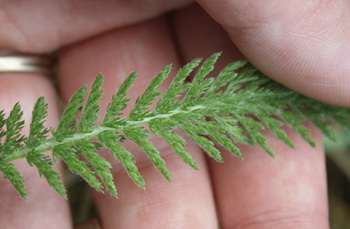 Leaf: The leaves are feathery, alternate, arranged spirally, 3 – 20 cm / 1 ¼ – 7 ¾ inches long, and evenly distributed on the stems. The leaves at the base and middle of stems are larger than the ones higher up. The leaves are hairy.
Leaf: The leaves are feathery, alternate, arranged spirally, 3 – 20 cm / 1 ¼ – 7 ¾ inches long, and evenly distributed on the stems. The leaves at the base and middle of stems are larger than the ones higher up. The leaves are hairy.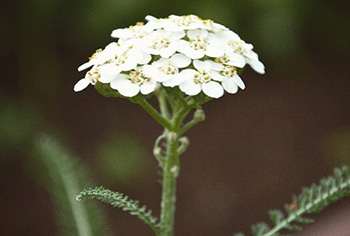 Flower: Yarrow blooms from the start of summer through to early fall. The individual blooms form composite flower heads. Each head consists of 15 to 40 small, round, white or pale pink flowers that have yellow centers.
Flower: Yarrow blooms from the start of summer through to early fall. The individual blooms form composite flower heads. Each head consists of 15 to 40 small, round, white or pale pink flowers that have yellow centers.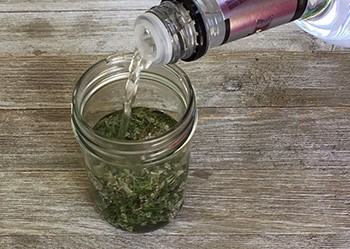
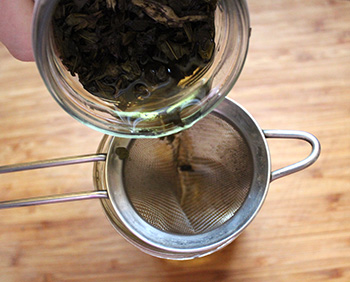
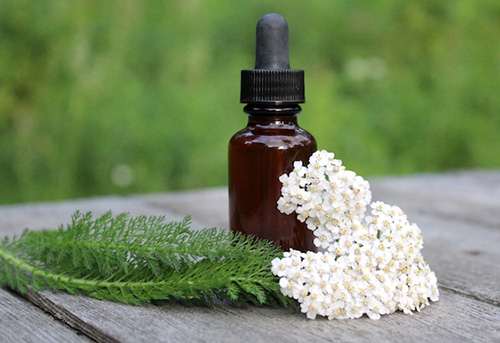
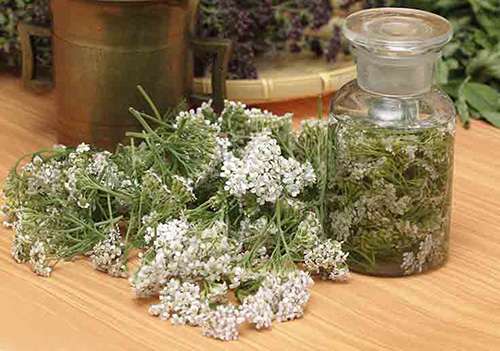
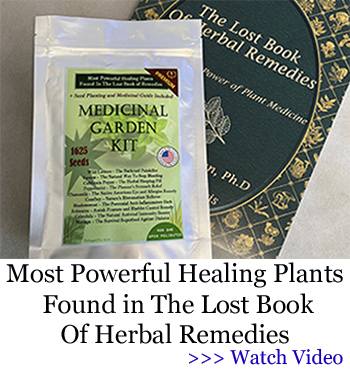
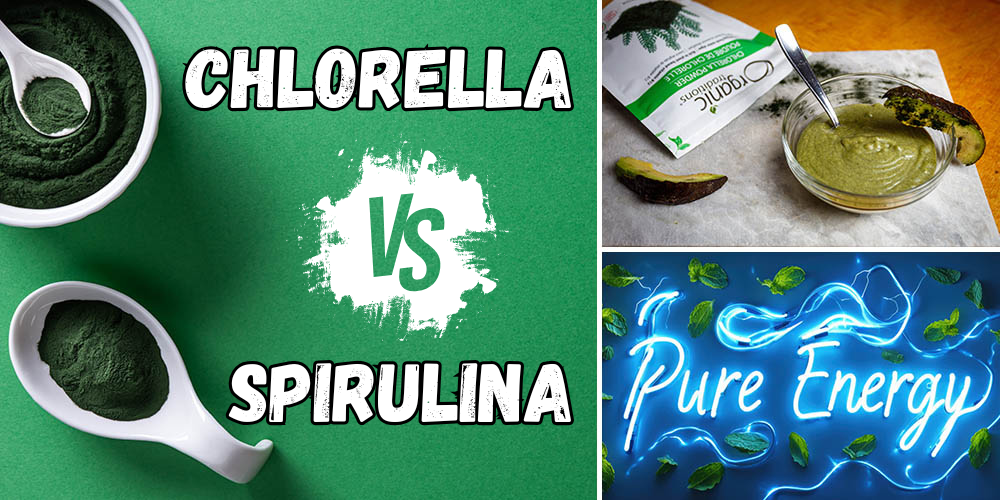
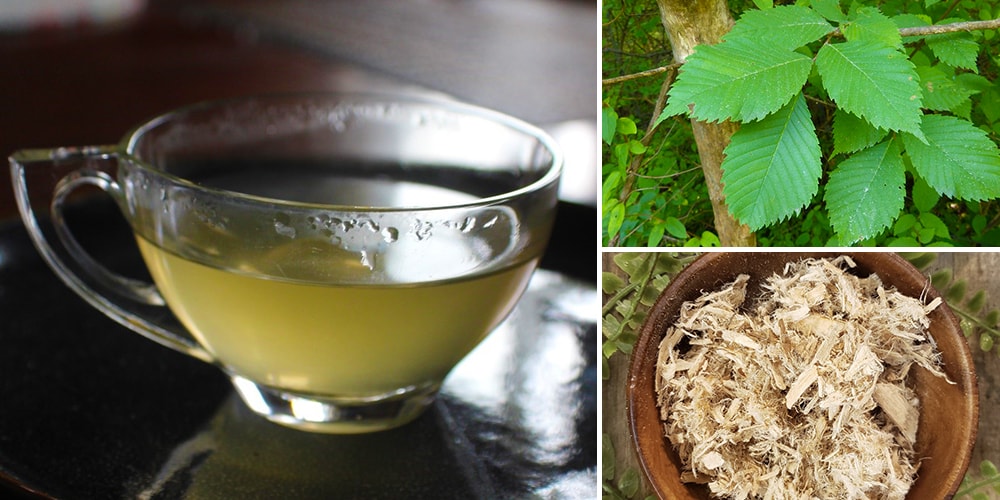
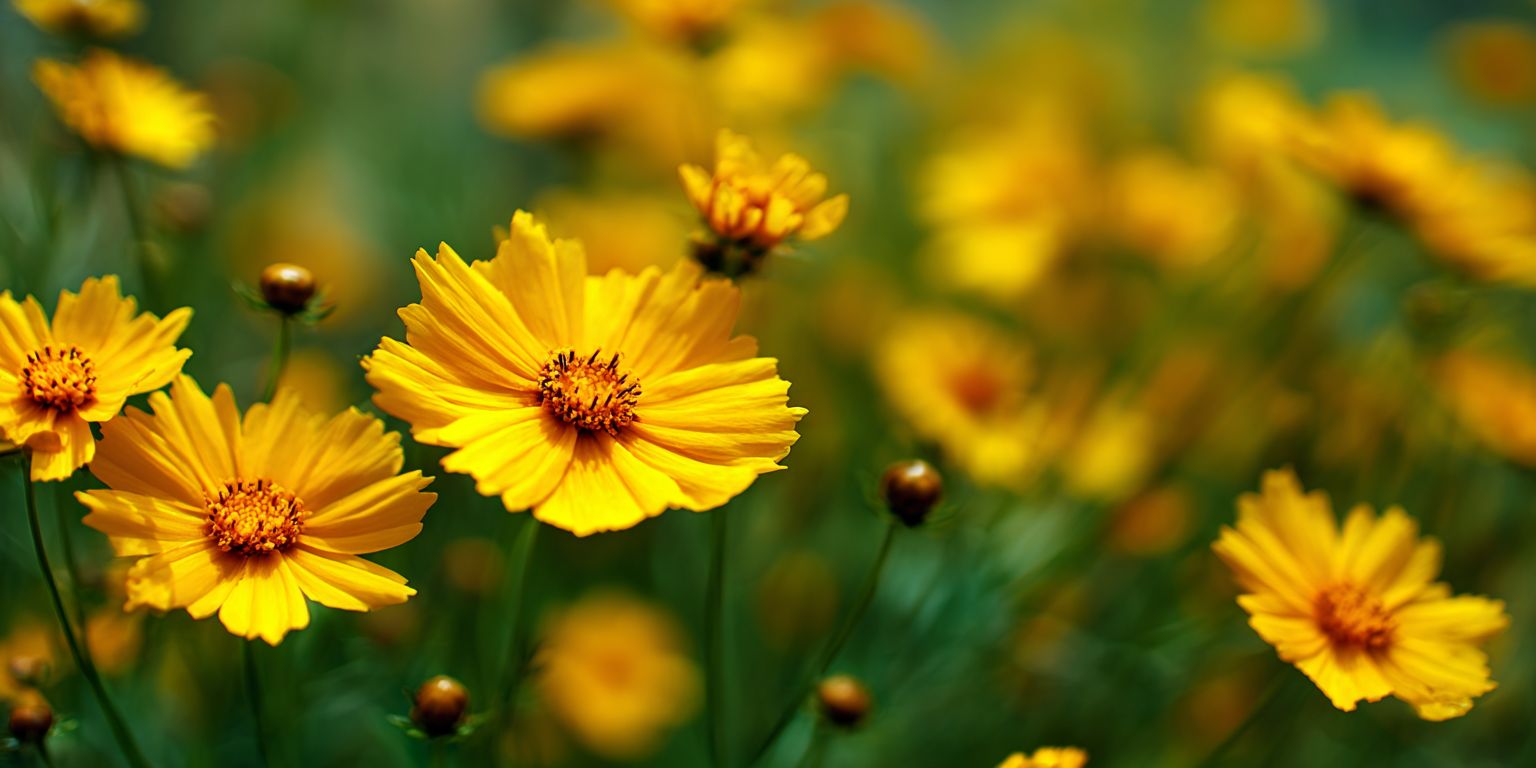
I have your book and love it so easy to follow and I just want to say thank you for all the information and easy directions in your book and online
I have been using Yarrow for years and making my own recipe to keep from being bit by mosquitoes. (Yarrow infused olive oil and Shea Butter.) Have you ever used it for that? I do not see that on your page but it is very effective.
Hi Mary,
Yarrow is indeed a great natural insect repellent.
We will definitely write an article about a Homemade Natural Mosquito Repellent. We’re just waiting for the “mosquito season” 🙂
Thank you !
Three times I had severe yellow bile vomiting.
Following twice chewing a leaf, flowers, once after tea of Achillea. It came six/right hours later, is why I didn’t make the connection twice.
Third time was tea with dried leaves and flowers, only one sprig.
Is yarrow tea or tincture good for sinus infections?
Suggestions for a grinder to turn yarrow into powder?
Dedicated coffee grinder for your herbals.
Hi. I just sliced apart the skin in between my baby and ring fingers! Lots of blood. Packed it with yarrow leaf powder. The bleeding stopped right away. Now, just wondering how to bandage. Before I packed it, it looked like the skin was 1/3 inch separated. Looks only skin deep. After awhile I soaked that area in some Colloidal Silver which washed away the excess powder leaving only the powder in the actual cut. So I was thinking I need to tape the fingers together to hold the skin together to help it heal…there is no room in that crease for bandages. Do I just leave the yarrow in there and bandage? Your story above says, it was a deep cut and you packed it with yarrow. Does the yarrow work its way out as it heals? (Dec 15/23)
PS. Love your book. Bought your seeds. I harvested this yarrow, wild from my property along with many other medicinal herbs and had a blast learning from you. This year I plan on making my herbal garden with the seeds. Recently cured an ice-pick headache (I never get headaches) using the SJW and Wild Lettuce tinctures, I made. It is truly empowering to be able to provide your own medical care.